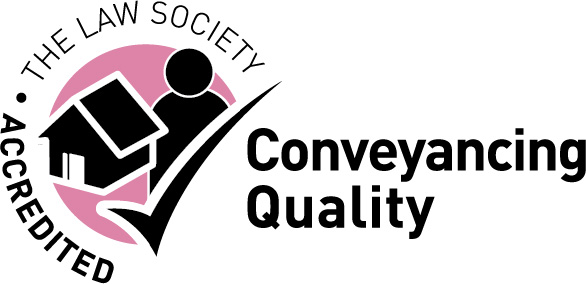Safeguarding – charities in the spotlight
4 September 2019
Various revelations and reports in the early part of last year - notably, those concerning Oxfam and Save the Children – have put the charity sector very much into the spotlight when it comes to safeguarding, and that light looks unlikely to be refocused in the near future.
Safeguarding can hardly be said to be a new issue for the sector but, since February 2018, when the revelations about Oxfam were made public, the number of serious incidents being reported to the Commission has risen significantly. In particular, the number of reports relating to safeguarding failures and near misses is growing.
The numbers
During the year to 31 March 2019, the Commission received 2,504 reports of safeguarding incidents (up from 1,580 the previous year). This amounts to almost two thirds (64%) of the 3,895 serious incident reports received overall. The Commission's safeguarding caseload has risen as a consequence, and it has now established a task force to handle the recent increases. In 2018-19, it opened 2,666 new compliance cases, of which 764 involved safeguarding concerns (up from 2,269 and 552 the previous year).
What are the trustees' duties?
Quite rightly, the Commission expects charities to foster safe and trusted environments. It expects them to give safeguarding top priority, and it is at pains to ensure that trustees meet their legal duties – as well as public expectations – around safeguarding.
In practice, unless your charity is a children's charity with workers who are normally engaged in regulated activity (broadly speaking, activity that comprises unsupervised activity, such as teaching or training) or your charity has workers who normally provide certain activities for adults who are vulnerable or at risk, the legal duties you have are fairly non-specific. Trustees have a duty to act in the best interests of their charity and to act responsibly and with reasonable care and skill. They also have a duty to ensure that the charity's assets are used only to support or carry out the charity's purposes. This includes avoiding exposing the charity's assets, its beneficiaries or its reputation to undue risk, and taking clear and reasonable steps to protect its beneficiaries from harm. Trustees should also be clear on how incidents and allegations will be handled should they arise. It is a key governance priority for trustees to proactively safeguard and promote the welfare of their beneficiaries.
If your charity deals directly with children or with adults at risk, you will have additional duties in relation to the appointment of trustees, and the engagement of employees and volunteers to ensure that they are suitable to work with the beneficiary class and that appropriate checks are undertaken with the Disclosure and Barring Service. Where a safeguarding incident does arise then the trustees should make a serious incident report to the Commission as soon as possible – even where the matter has already been referred to another authority, such as the police or the Department for Education.
What should trustees do?
The Commission's safeguarding guidance for charities (available here) recognises that the steps that trustees should take in relation to safeguarding will depend to some extent on what their charity does and who it works with. However, the guidance makes clear that the Commission expects charities to:
-
make sure all trustees, employees, volunteers and beneficiaries, know about safeguarding and people protection;
-
have appropriate policies and procedures in place;
-
check that people are suitable to act in their roles;
-
know how to spot and refer or report concerns;
-
have a clear system of referring or reporting to relevant organisations as soon as they suspect or identify concerns;
-
set out risks and how they will be managed in a risk register which is regularly reviewed; and
-
be quick to respond to concerns and carry out appropriate investigations.
Policies and procedures
What constitutes "appropriate policies and procedures" will vary according to what the charity does, where it works and its exposure to risk, but even the simplest policy should make clear how the charity will protect people from harm and make sure that they can raise safeguarding concerns, and it should set out how allegations or incidents will be handled and, where relevant, reported to the authorities.
However detailed a charity's policy, it is important to ensure (and to be able to demonstrate) that it is actually put into practice and reviewed periodically. Even the best policy will be of no use to the charity if it is not followed, or if failures to follow it are not dealt with appropriately. If a charity has staff or volunteers, it should also have a clear code of conduct which sets out the charity’s culture and how people in the charity are expected to behave.
Culture, ethos and integrity
The trustees of a charity with the scale and complexity of Oxfam or Save the Children cannot possibly be involved in all aspects of the day-to-day running of their charity. Primarily, their role is confined to setting the strategic direction of the charity. However, as trustees, they are ultimately responsible for protecting the interests and welfare of their beneficiaries and for safeguarding the reputation of their charity. When things go wrong, it is the trustees who will be held to account rather than senior staff. The trustees have a vital role, through their leadership, in setting the culture, ethos and integrity of the organisation and, by having appropriate policies and practices in place, they must ensure that those values are embodied by the organisation and respected by employees and volunteers. When things go wrong, as they often do, no matter how robust the policies and practices the charity has in place, the trustees need to act swiftly and transparently in order to safeguard the values they have set.
A note of caution
None of what we've said above is particularly new: safeguarding the charity's assets, beneficiaries and reputation has always been a fundamental element of the role of trustee. However, the Commission is now focusing on safeguarding matters far more than it has done previously. In many respects, this has to be right given the upward trend in the number of incidents being reported, coupled with the fact that the Commission has a statutory duty to uphold public trust and confidence in charities.
But, without intending to detract from the importance of the issue, we have noticed a tendency for the Commission to expect a little too much of trustees in the early stages of a charity's existence – particularly at the pre-registration stage. While we recognise that the registration application is the Commission's only real opportunity to consider in detail what an organisation will do and how it will do it, the Commission's role at this stage is to identify whether or not the organisation has been established for exclusively charitable purposes and that it will benefit a sufficiently large section of the public. If the organisation meets these criteria and has validly appointed trustees, the Commission has a duty to register it as a charity.
The Commission can register a charity without knowing the minutiae of how the charity will be run but it now seems reluctant to do so without having seen various pieces of supporting documentation – including copies of safeguarding policies, details of advice or guidance the trustees have received about safeguarding procedures, details of how policies and procedures are monitored and reviewed, information about selection and vetting policies, and so on. In practice, many newly established charities will not have such information available at the point at which they apply to be registered – particularly in the case of CIOs, which do not come into existence at all until registration is complete. It seems unreasonable to expect the trustees of a CIO to go to the effort (and expense) of drawing up policies and mapping out procedures before they even have an entity to operate.
For many years now, the Commission's application process has referred trustees to its guidance on safeguarding children and adults at risk and the trustees of relevant charities are asked to confirm (under signature) that they have read and will follow it. In our view, this ought to be sufficient for registration purposes: any request for further detail could reasonably be met with an explanation that, as the charity is in the process of formation, formal policies have not yet been drawn up – perhaps coupled with an undertaking to provide copies once they are available. For the time being, however, if you are applying to register a charity that will work with children or adults at risk, be prepared to explain exactly how you will safeguard them.



